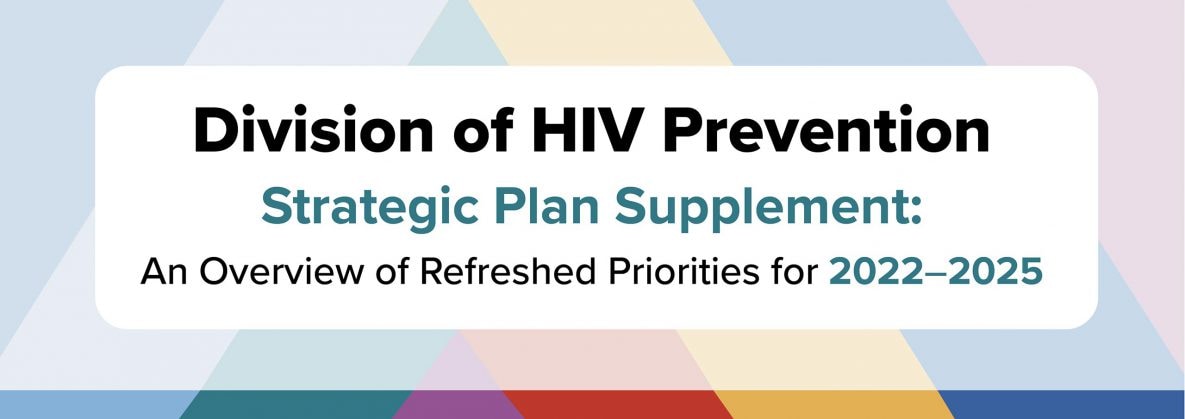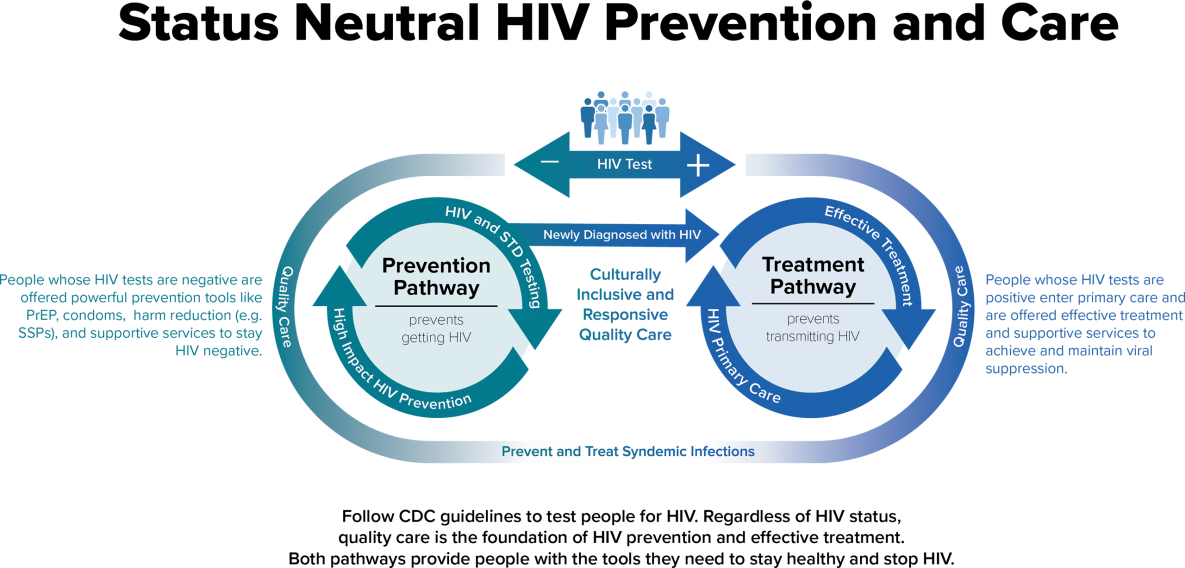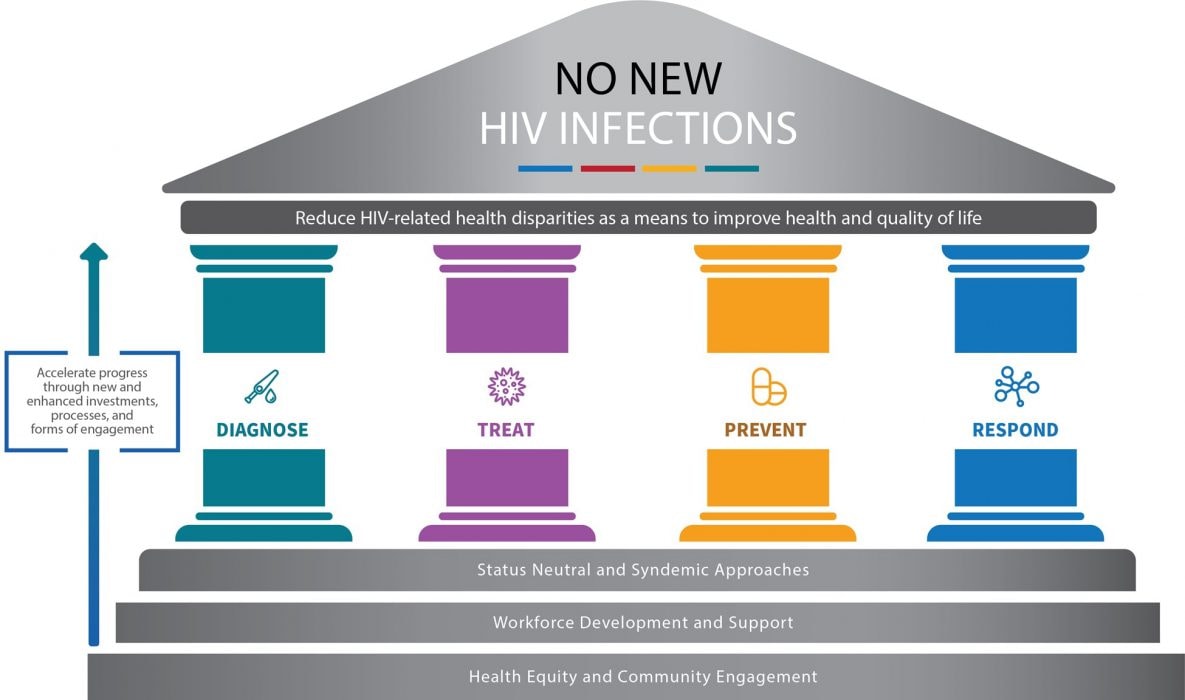DHP's Cross-Cutting Focus Areas and The Strategic Framework

DHP’s Cross-Cutting Focus Areas and The Strategic Framework
Cross Cutting Focus Areas
To effectively build upon the existing strategic plan, DHP identified four cross-cutting focus areas that can significantly impact how the Division achieves its HIV prevention goals. DHP will use the following focus areas to better position the Division to advance its mission and bolster EHE efforts.
Health Equity
While the United States has made significant progress in reducing HIV transmission, systemic factors continue to contribute to persistent health disparities. Black women, transgender women, and Black and Hispanic/Latino gay, bisexual, and other men who have sex with men experience disproportionately higher rates of HIV diagnosis. The impact of racism, homophobia, transphobia, and stigma significantly exacerbates the health disparities experienced within the communities that DHP serves. DHP is engaged with its funding recipients, people with lived experience [1] and other partners to identify appropriate strategies for overcoming these systemic barriers to beneficial HIV tools and services. DHP is committed to making health equity central to its efforts so that all people can benefit from available HIV prevention and care resources.
[1] Methods and Emerging Strategies to Engage People with Lived Experience: Improving Federal Research, Policy, and Practice (hhs.gov)
Community Engagement
DHP recognizes that there is an opportunity to expand how it engages with people with lived experiences and communities and to increase the number and diversity of partnerships. These efforts will encourage new organizations and voices to come to the table to help in the development and implementation of tailored solutions that increase the effectiveness of prevention and treatment efforts at the local level. A comprehensive approach to community engagement and different types of partnerships can expand prevention efforts and provide more rapid and directed care to reach people who can most benefit.
Syndemic Approach
Syndemics are epidemics—of diseases or health conditions, such as viral hepatitis, sexually transmitted infections (STI), substance use, and behavioral health issues—that interact with each other and by that interaction increase their adverse effects on the health of communities that face systematic, structural, and other inequities. In addition, SDOH (racism, homophobia, poverty) interact with syndemic conditions/diseases to elevate them to syndemic-level. While SDOH are not epidemics per se, they are social factors that can exacerbate the negative impact of linked epidemics. These syndemics contribute to excess disease burden and ongoing health disparities. Collectively addressing these intersecting conditions and SDOH can result in better HIV prevention and care outcomes by prioritizing the whole person.
Status Neutral Approach
DHP’s goal of “No New HIV Infections” requires a bold and comprehensive delivery method for HIV prevention and care. Stigma and structural barriers are major obstacles that deter people from seeking HIV prevention and care. People with HIV and people who could benefit from HIV prevention are not two distinct populations but, rather, a group of people with similar medical and social service needs. Adopting a status neutral and whole-person approach to people in need of prevention and care services can address these similar needs, along with HIV-related stigma. (Fig. 3).
Strategic Framework
The below conceptual model (Fig. 4) illustrates how the focus areas and EHE pillars inform the delivery of HIV care and prevention activities. The investments described in this document aim to better equip the Division and its partners to act within this framework, and DHP will do so by integrating the components of the framework throughout its scientific and programmatic activities.
To deliver on the EHE pillars (Diagnose, Treat, Prevent and Respond) in a fair and equitable manner, health equity and community engagement must be fundamental to any intervention that is implemented. Ensuring integration of health equity and community engagement principles into prevention and care allows partners and providers to address health disparities holistically, develop tailored solutions specific to the people who can most benefit, and increase efficacy of prevention interventions. As health equity and community engagement are integrated into delivery, DHP will further extend its reach and reduce disparities.
To fully realize its health equity and community engagement aspirations, DHP is also committed to building and sustaining a diverse, equitable, inclusive, accessible, and committed HIV prevention and treatment workforce. This will also include the Meaningful Involvement of People with HIV/AIDS (MIPA). These efforts include prioritizing the well-being of DHP staff through responsive actions, such as remote work flexibility, expanded leave options, and promoting work life balance.
DHP will continue to strengthen its internal workforce capabilities while also collaborating with its partners to build external capacity. Together these efforts will support the current and next generation of HIV prevention and treatment leaders.
With a foundation built on health equity, community engagement, and workforce development, the syndemic and status neutral approaches guide how health departments, CBOs, and other partners can diagnose, treat, prevent, and respond to HIV. The implementation of these two approaches is enabled by a workforce that is equipped with the resources and knowledge to deliver culturally responsive and inclusive support. The status neutral and syndemic approaches address the unique needs of individuals, including prevention and care for syndemic conditions, regardless of HIV status. Thus, these approaches effectively bridge the divide between prevention and treatment services, help to mitigate stigma, and provide whole-person care.

